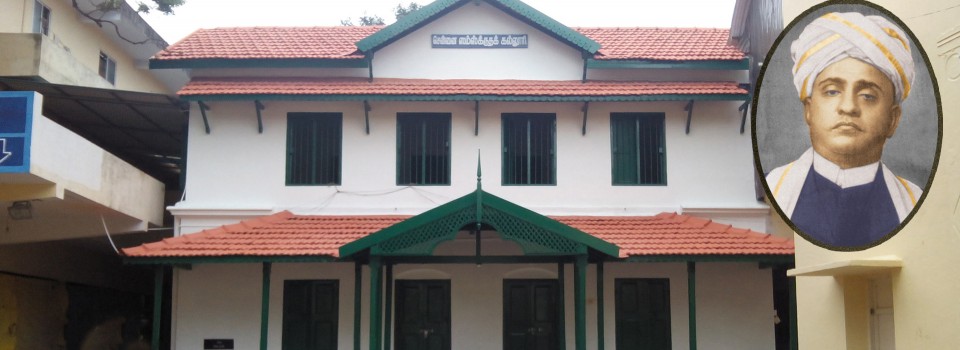
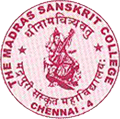
The Madras Sanskrit College
#84, Royapethah High Road Mylapore, Chennai, Tamil Nadu
2147483647, 0, 0, 0
www.madrassanskritco
mds.sanskritcollege@gmail.com
- Approved by
- Affiliated toUniversity of Madras
Krishnaswami Iyer, noticing the diminishing number of teachers and fast deteriorating standards of Sanskrit during his time, took upon himself the heavy task of founding a place for imparting instruction to the highest standards in the classical works and sastras on the traditional methods of intensive study. It was thus in December 1905, the concept of the Sanskrit College was mooted, and on February 1, 1906 the college began functioning. Sri V. Krishnaswami Iyer, Rao Bahadur Sri A. Krishnaswami Iyer and Sri A.S. Balasubramania Iyer formed themselves into a Committee, each one contributing to the growth which was steady and spectacular. On the 27th October 1907, a Trust Deed was executed and registered by Mr. Krishnaswami Iyer and Sir C.P. Ramaswami Iyer which had for its object, the maintenance of a Sanskrit College and also the encouragement and promotion of research and investigation into several departments of Oriental knowledge. The college encouraged students to study works in Mimamsa, Advaita Vedanta, Vyakarana, Sahitya, Jyothisha and Nyaya as well as in all the special branches of study selected by the students, thus contributing to the progress of human thought both in the East and the West. The scheme of the Madras Sanskrit College was an improvement over the existing Sanskrit Colleges in Mysore and Travancore. Not only was English regularly taught but also regular classes were held in comparative and critical studies. The period of study in the college was five years. At the end of the fifth year, the college gave a certificate called Visarada in Mimamsa, Vedanta etc. In the year, 1907, the institution was recognized by the Director of public Instruction and was placed in the list of aided Instructions with a grant of Rs. 1000. The far sighted founder's discovery, Mahamahopadhyaya professor S. Kuppuswami Sastriar, was the first principal of the college. It was very fortunate that the College had such a dynamic person as its first Principal. Sastriar himself embodied the synthesis of Pundit erudition and modern critical scholarship which V. Krishnaswami Iyer had envisaged. Because of his knowledge in both types of studies, he perfected the scheme of studies for the various courses. He incorporated important Sastraic texts in the Degree curriculum and Comparative Philology and History of Literature and Essay in the Siromani course. During his time, the college progressed very well and achieved a great reputation in the world of Sanskrit. Sastriar was the principal from 1906 to 1910. Mahamahopadhyaya Sri Venkatasubba Sastrigal. Pundit Srinivasa Sastri and Mahamahopadhyaya Sri Chandrasekhara Sastrigal were the other eminent scholars in the faculty who specialized in the many branches of Oriental Learning. They formed a great team under the leadership of Prof. S. Kuppuswami Sastri. The first batch of students was noteworthy on account of the fact that many of the students later distinguished themselves as some of the most eminent scholars and professors in India. On April 28th, 1915, Mahatma Gandhi visited the college and expressed great admiration and satisfaction with the work of the college. On 9th October 1922 Dr. Rabindranath Tagore also visited the Institution and was extremely pleased with the performance of the college, especially the encouragement of Sanskrit learning and the study of Advaita philosophy. 1927 the title of Mahamahopadhyaya was conferred by the Government of India on Prof. S. Kuppuswami Sastriar, the first Principal of the college. Another old student of the college, Pundit Ananthakrishna Sastrigal was also honored with the same title. Eminent scholars like Dr. Paul Tuxon of University of Copenhagen, Dr. F.W. Thomas, Professor of Sanskrit Studies, Oxford University, Sir Mirza M.Ismail, the then Dewan of Mysore, a distinguished scholar professor M. Hiriyanna have visited the college and expressed their admiration over the functioning of the Institution. Many other distinguished scholars have also subsequently visited the college. In 1966, the Jyothisha Siromani course was started at the college with the permission of the University of Madras and was duly affiliated to it. The Govt. of India gave financial aid. The Vyakarana Siromani course was started in 1973 with affiliation to the University July 1977. Under this scheme, the Union Government has fixed the salary of the teachers on par with the lecturers' salary in a first grade degree college of Madras and financial aid from the Government. From the beginning of the academic year 1977, the College was selected by the Ministry of Education and Social Welfare, Government of India, for receiving grants under the scheme of Adarsh Sanskrit Pathasala (later Mahavidyalaya). The application for the above grant was made with the concurrence of the State Government. The Government of India has been paying the grant from 1977 till date. From the Academic year 1979 ? 1980, the Madras University has revised the pattern of the Siromani Course and increased the duration of the course from four years to five years. The syllabus for the course was also revised. Under the new pattern two more language papers viz. English and Tamil or Hindi were prescribed in the syllabus in addition. The College completed a Hundred Years of its purposeful and useful existence on 1st Feb 2006. To celebrate this occasion, the Management of the college organized various programs throughout the year. Many of our Principals and students of this College have become well known scholars of international repute and have also been awarded prestigious titles like Mahamahopadhyaya and have received Certificates of Merit from the President of India. The College had been able to produce such stalwarts as it had provided opportunities to students to study the Sastras without any compromise in the method of learning and at the same time obtain formal academic recognition. Looking back, the college is justifiably proud of its achievements; the College hopes to continue its services to the cause of Sanskrit learning beyond the "Hundred Years" which it reached on February 2006 A.D. The institution has the honor of capturing the highest number of medals in All India Sanskrit Elocution Contest, conducted by Rashtriya Sanskrit Sansthan, New Delhi, annually
Academic Facilities
.png)
Educational Tour
.png)
Digital Classes
.png)
Scholarships

Seats Reservation

Fee Refund Policy
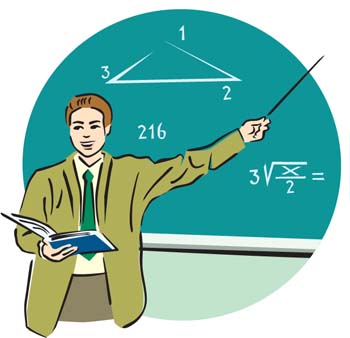
Guest Lectures

Management Q sts

Library Resources

Hi-tech Computer Lab

Language Lab
Non-Academic Facilities

Sports

Visitors Lounge

Auditorium

Motivational Camps

Annual Meet

Security

Cultural Activities

Online Information
Other Facilities

Transport

Water Purifier

Health Center

Co-education

Emergency Alarm

Yearly Planned Schedule

Power Back

Focus on Spirituality

Tuck Shops

Canteen Provision
- Rate This:
| Arts | Duration | |
|---|---|---|
| Diploma in Sanskrit | 3 Years | |
| Bachelor of Arts in Sanskrit | 3 Years | |
| Master of Arts in Sanskrit | 2 Years |
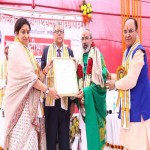
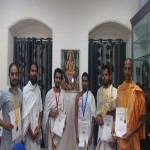
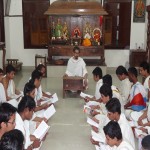
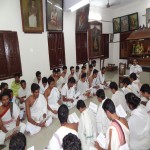
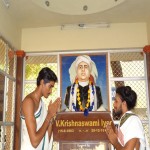
.png)
 International Experts
International Experts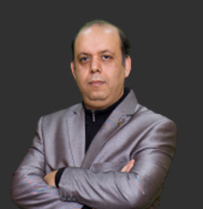
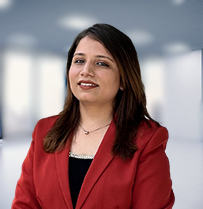
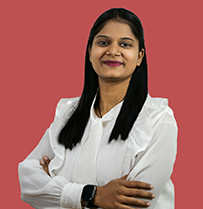



Comments